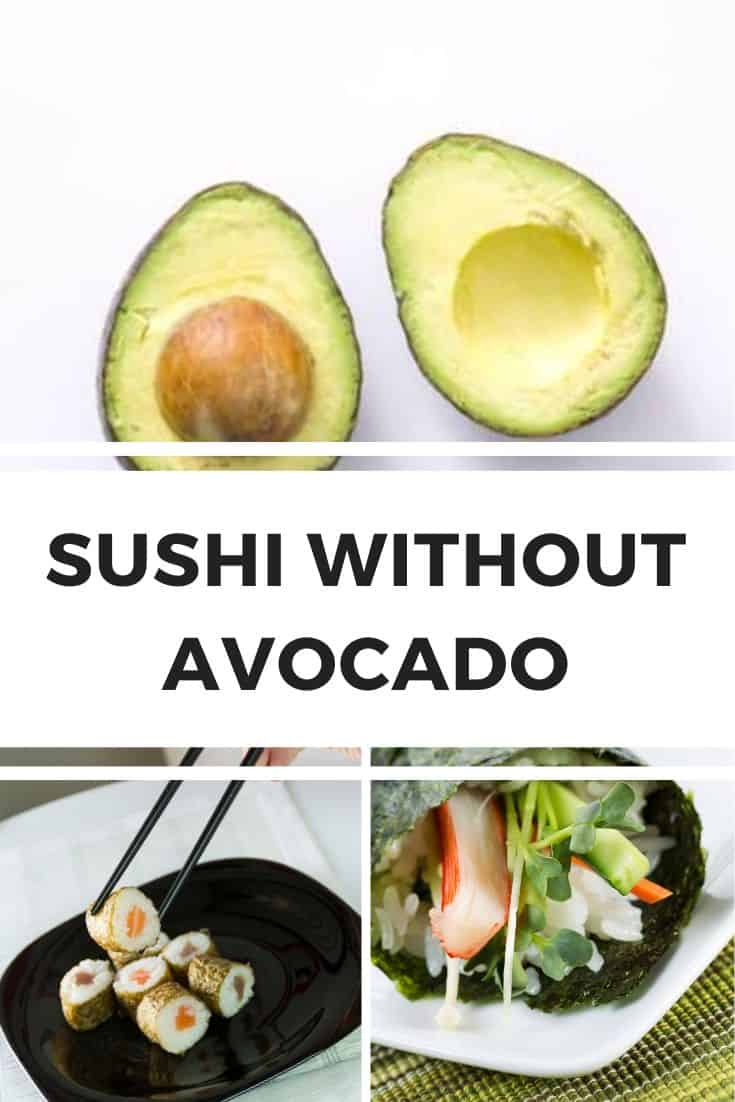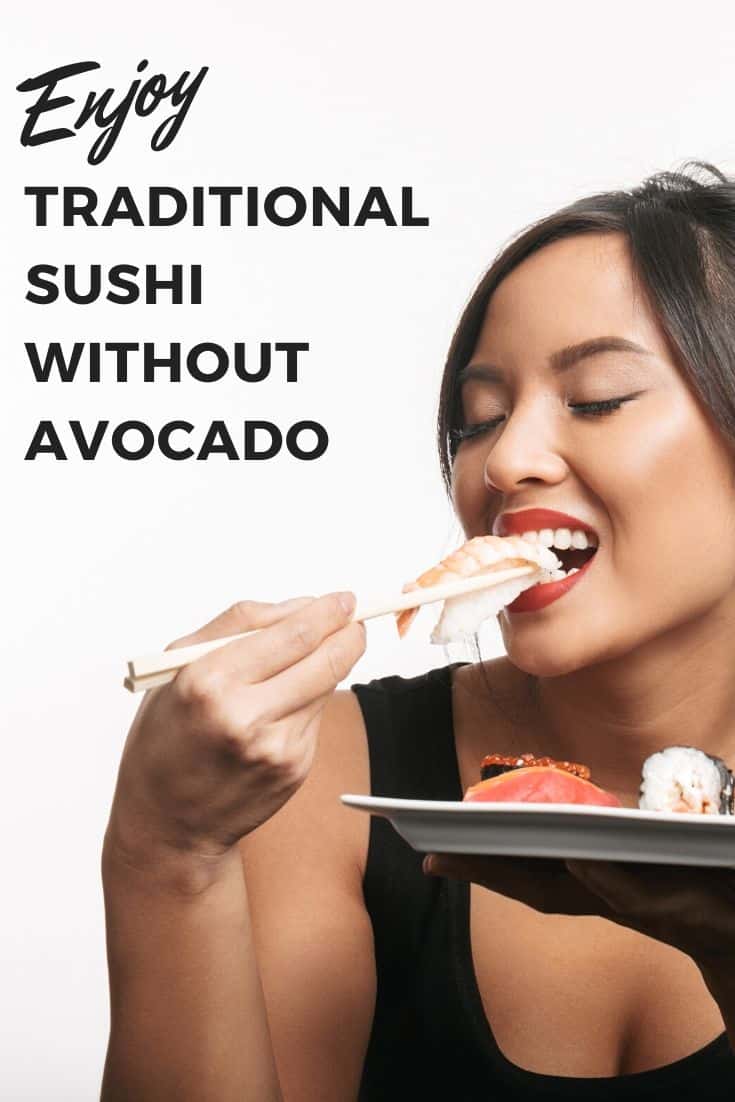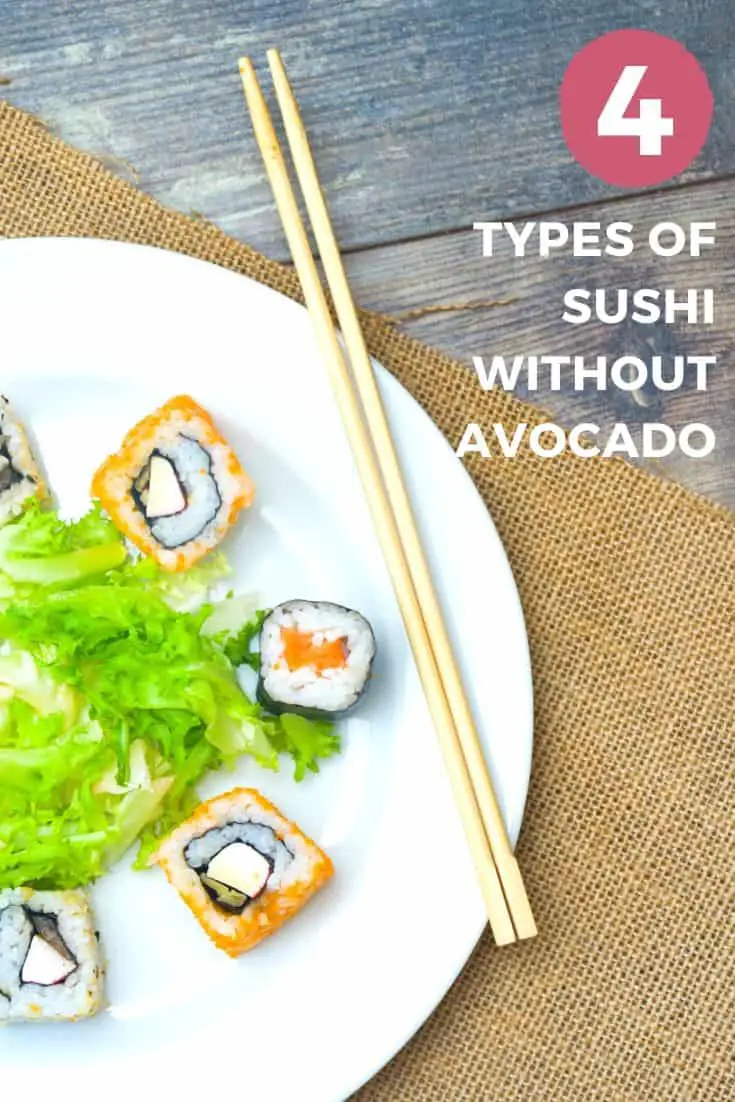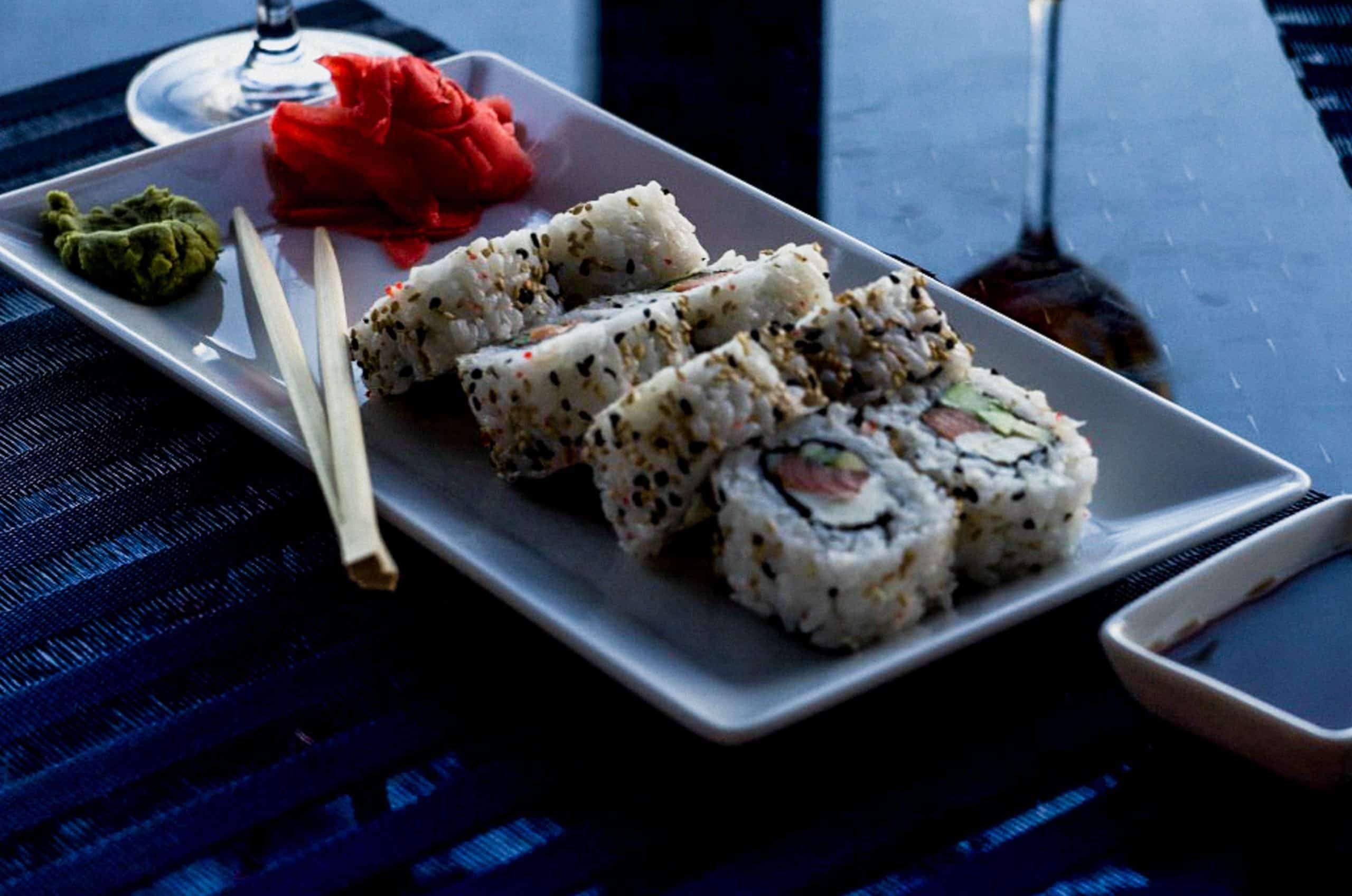Sushi without avocado? These sushi types you can safely eat
Wow! I didn’t know there were so many types of sushi without avocado, so if you can’t eat it or just don’t like it, there’s plenty to choose from.
Today, let’s take a look at all of these.
Although we commonly find sushi with avocado in it, not every sushi contains avocado. Sushi with avocado was not even a real thing in authentic Japanese cuisine you know.

The concept of avocado in sushi was actually born in the US when the trend of sushi entered western countries.

Check out our new cookbook
Bitemybun's family recipes with complete meal planner and recipe guide.
Try it out for free with Kindle Unlimited:
Read for freeIn this post we'll cover:
Types of Traditional Sushi Without Avocado
If you are not a fan of avocado in the middle of your sushi, you can go with the traditional Japanese types of sushi such as:
Nigiri
The most simple serving of sushi. Nigiri only consists of a ball of vinegared rice with a slice of meat on top. They usually use raw fish (although there is a lot of sushi even without fish) as the meat such as salmon, tuna, or uni (sea urchin’s gonad).
But sometimes they also use cooked fish like unagi (freshwater eel). Nigiri is, unlike other sushi, supposed to be eaten by hand. But many people mistakenly eat them with chopsticks.

Maki
Maki is the type of cylindrical sushi wrapped in a nori sheet. It is the mainstream type of sushi. Many things can be rolled in Maki sushi; meat, vegetables, and even tropical fruits.
Uramaki
This type of sushi is an inside-out version of Maki where the nori sheet is wrapping the whole dish inside the rice roll. Sometimes, uramaki is rolled on salmon roe so you can see some orange tiny balls on the surface.
You can get it in Japan but it isn’t really traditional though.
Temaki
In Temaki, nori sheet is shaped into a cone and then is filled with rice, meat, and veggies. This is more of a large individual wrap.
Temaki should be eaten with your hands because the filling would spill and be messy if you lift it with chopsticks.
Avocado might not be an authentic filling of sushi. However, it has been an important part of modern sushi.
It doesn’t even matter if you like avocado in your sushi or not. There are plenty of types of sushi to match any of your preferences.

Read more: essential sushi guide for beginners
Types of Sushi with Avocado
All the popular types of sushi with avocado are from the US. That is why they usually have western names such as:
California Roll
This is the biggest revolutionary innovation of sushi as the dish became widely popular. The nori-wrapped roll contains rice with avocado and crab in it. Sometimes, a thin layer of omelet is added between the nori and rice.
Avocado Roll
The most simple sushi with avocado. The dish contains nothing but avocado and rice.
Surprisingly, many Americans are fond of it.
Also check out these healthy brown rice sushi options
Philadelphia Roll
If there is one type of American sushi that has stranded too far from its traditional roots, that would be the Philadelphia roll. This type of sushi contains salmon, avocado, and cream cheese!
Caterpillar Roll
Similar to its name, the Caterpillar roll is sushi arranged in a caterpillar shape. The ingredients used for this are unagi (a type of eel), cucumber, and avocado.
Does traditional Japanese sushi have avocado?
Sushi was originally a way to serve the seafood people caught that day.
They served it raw with minimal seasoning and additional ingredients so they could optimally enjoy the freshness of the ocean delicacies.
That’s still the case with sushi in its purest form and nori, the seaweed sheet, is sometimes used to keep the rice and seafood in a roll.
You can use vinegar to preserve the natural briny flavor while also eliminating the disturbing fishy smell. It also adds to the longevity of the dish. However, sometimes they cook seafood too.
Local vegetables and even tropical fruits are also used in sushi sometimes. They made it into vegan sushi or mixed it with other sushi fillings.
The common plant-based ingredients in sushi are cucumber, shiitake mushroom, Nasu (eggplant), salted pickled plum, and of course, nori.
Read all about the different types of sushi, both traditional and american
Sushi and Avocado in the US
It is quite uncommon to find land protein in authentic Japanese sushi. Moreover, avocado is not the fruit that normally grows in Japan.
Even up until now, most avocados in Japan were imported from Mexico. Hence, there is no way that authentic Japanese sushi may have had avocado in it.
The history of avocado in sushi begins when sushi first enters the US. A Japanese chef had difficulties finding Toro, a specific part of Tuna meat, to make his favorite sushi.
And since Americans love having avocado in their meal, the concept of sushi with avocado was quickly accepted. Impressively, some menu’s became widely popular, especially in western countries.
Best avocado substitute in sushi
Toro has a soft taste and buttery texture which could enhance the flavor of the sushi. After experimenting with many kinds of food, he chose avocado as the substitute for Toro. But you can just as easily substitute avocado for that buttery toro.
Avocado is a healthy and buttery addition to sushi, so the best substitutes for avocado in sushi are cucumber slices, hummus, edamame, eggs, or salmon. For those who want even more variety at their disposal, there’s even garlic paste or cashew butter to add some softness back into the roll.
Sushi with Avocado in Japan
Although now you may easily find many variations of sushi ingredients in Japan, sushi with avocado is still very rare to find. That is not because the Japanese dislike the avocado, but simply because the idea is still too unfamiliar for them.
However, you can easily find many dishes with avocado in Japan. Avocado is sometimes used as an accompaniment for shrimp or salmon dishes. You can also find them tossed in a salad.
Also check out this Unagi Sushi eel
Check out our new cookbook
Bitemybun's family recipes with complete meal planner and recipe guide.
Try it out for free with Kindle Unlimited:
Read for freeJoost Nusselder, the founder of Bite My Bun is a content marketer, dad and loves trying out new food with Japanese food at the heart of his passion, and together with his team he's been creating in-depth blog articles since 2016 to help loyal readers with recipes and cooking tips.


